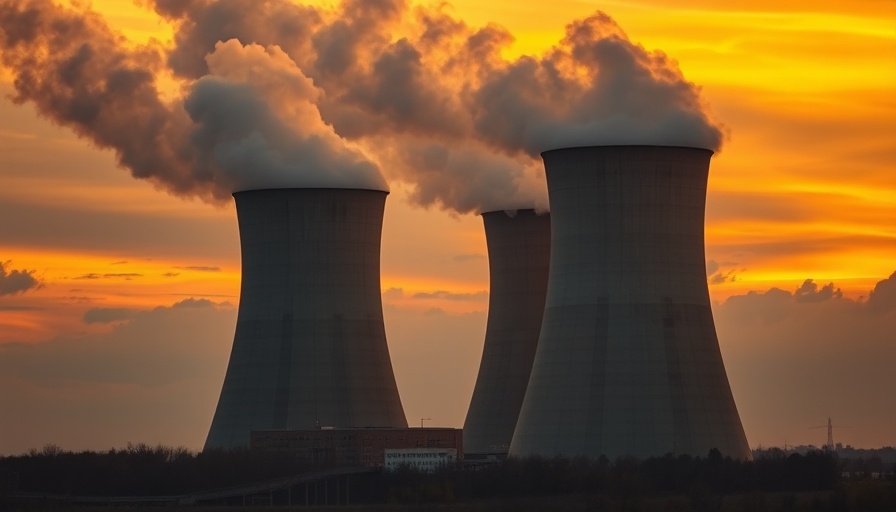
The Rise of DeepSeek: A Game Changer in AI
In an unexpected twist in the tech world, the Chinese AI startup DeepSeek has emerged with its R1 model, heralded for its remarkable efficiency. Unlike traditional AI models that require extensive hardware resources, DeepSeek's approach relies on a fraction of the compute power typically expected. By leveraging only 2,048 Nvidia H800 GPUs over two months for its training, DeepSeek raises pivotal questions about the future of AI development and the accompanying energy needs.
Nuclear Energy and AI: A Delicate Balance
The intersection of AI power demands and nuclear energy's potential renaissance is both intriguing and complex. With data centers projected to consume a substantial percentage of electricity in the U.S., tech giants are eager to invest in energy resources to sustain their operations. Companies like Google and Amazon have made significant investments in the nuclear sector, betting on the promise of next-generation reactors to meet their soaring energy requirements. However, the emergence of DeepSeek could reshape these strategies, potentially reducing the urgency for new nuclear plants.
Future Trends in Energy Consumption
The implications of DeepSeek's innovation go beyond AI; they could disrupt traditional energy markets. Should the efficiencies proven by DeepSeek inspire other AI models to adopt similar strategies, the demand for nuclear energy and the need for massive new infrastructure could diminish. As the industry evolves, the incentive for tech companies to invest heavily in physical energy assets may wane in favor of ongoing software optimization. The timeline for new reactors remains long, with tangible results expected only by 2030 or later.
Counterarguments: The Skeptics
Despite the excitement surrounding DeepSeek, skepticism remains. Analysts have expressed concerns regarding the sustainability and transparency of the company’s claims. Citigroup analyst Atif Malik points out that questions linger about the potential undisclosed use of advanced GPUs in DeepSeek's breakthroughs. If this proves accurate, it could mean that the road to sustainable AI development is longer and more complex than currently anticipated.
A Cautious Path Forward
As the landscape of AI and energy continues to evolve, the destiny of nuclear startups and energy companies may hinge on their ability to adapt to these shifts. The balance between AI advancements and energy production remains precarious, requiring innovative thinking on both fronts. The focus should not merely be on immediate energy supply but also on sustainable practices that harness the true potential of technology.
 Add Row
Add Row  Add
Add 




Write A Comment